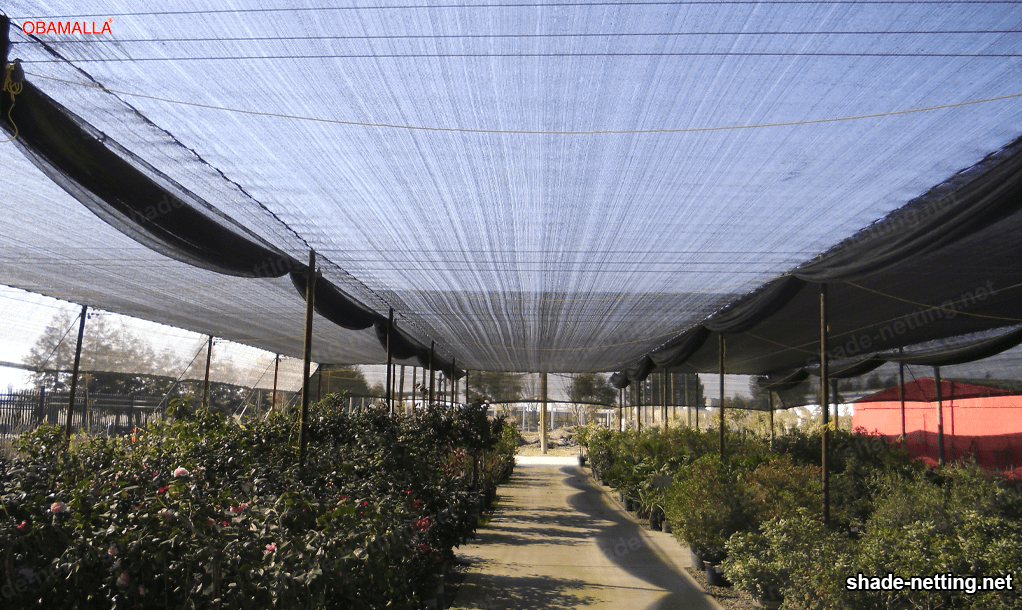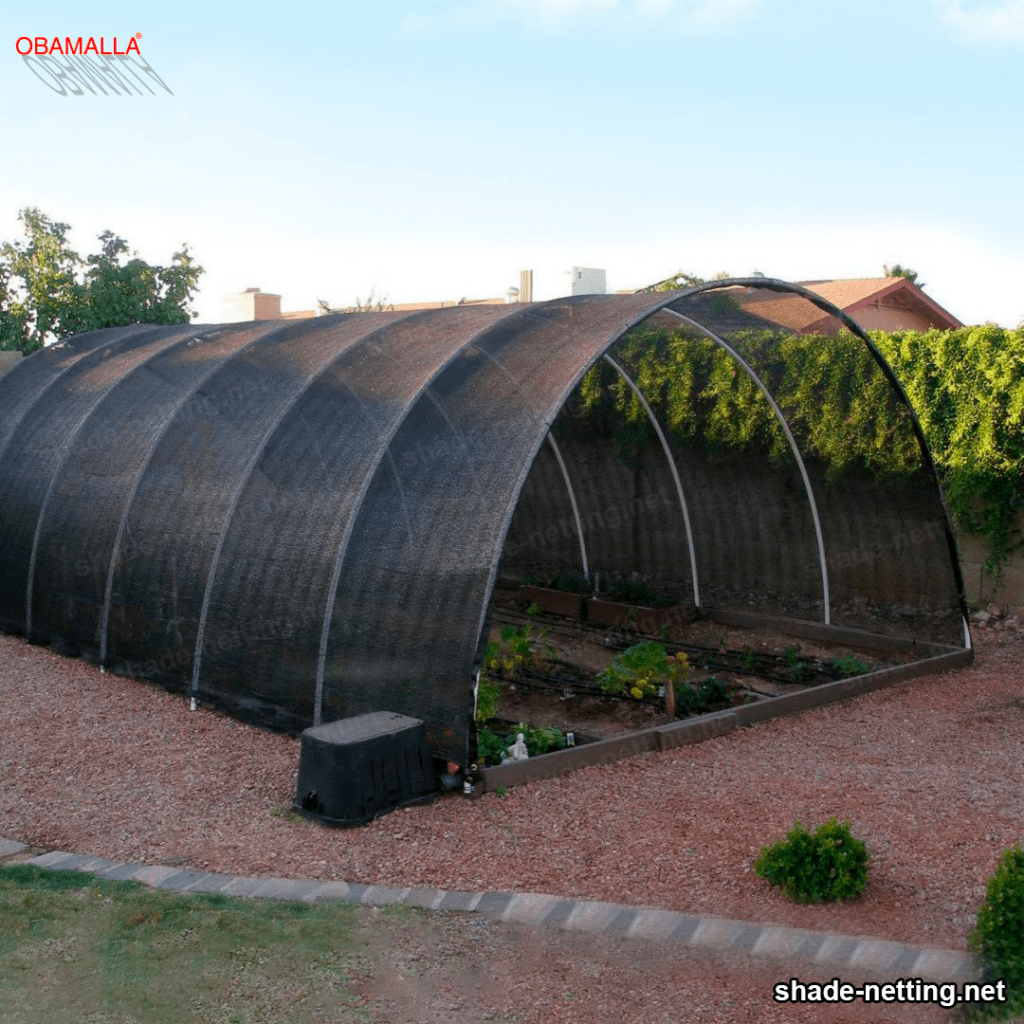Shade netting is a complex but useful product that has become an essential element to improve the quality of life in many urban areas.
These wire umbrellas are especially useful for people in urban environments, where solar radiation can be a limiting factor for certain activities, such as work, entertainment, study or exercise.
Compared to natural shade, they provide immediate protection from sunlight and heat, allowing people to enjoy sunlight without overheating. One of the most common uses of shade netting is blocking direct solar radiation and defending against UV rays. This mesh is highly UV resistant, blocking up to 97% of UV rays and keeping people and property protected from excessive heat and ultraviolet rays. This means that its use helps protect health and reduce the incidence of UV-related diseases, such as skin cancer.
In addition, mesh shade umbrellas provide useful privacy in outdoor areas. Because these umbrellas can be sustained for years without much need for maintenance, they allow users to control the degree of privacy with which they wish to relate to the environment in which they live. For example, they have the option of using the shade netting to block the view of people passing by, giving the user the freedom to feel more secure in their own area while maintaining a sense of privacy.
One practical use of shade netting that has been little considered in urban environments is thermal insulation. This means that whether it’s a work platform or a playground space, shade netting can help keep the area cooler by lowering the temperature. Some manufacturers also offer varieties in dark colors, further increasing the insulation effect and improving the overall environment and health of the area. This is especially useful for those working in areas exposed to intense heat, providing a temperature reduction of close to 15°C, improving worker comfort and increasing performance.

Finally, such netting also offers a practical use for environmental protection.
They can block chicken access to the urban environment, helping to keep gardens free of dust, debris and weeds. By preventing the entry of unwanted animals, shade netting also helps reduce pollution problems and wildlife pressure in urban environments, preventing the overuse of pesticides and herbicides.
The uses of shade netting are becoming increasingly widespread, thanks to its strength and versatility. Its use provides a significant improvement in the quality of life, from protection against UV rays to improving the environment and reducing pressure on the environment. For these reasons, more and more cities are using shade netting to contribute to the improvement of their urban environments.
Enhancements generated by a shade net in urban use
Shade netting has become an excellent tool for improving urban use. This mesh is defined as a huge roof that is built over the urban population. This mesh is constructed with a wind and weather resistant material, which provides great protection to the population living in the area.
The main utility of the shade netting is to provide protection from the elements. This means that it can protect inhabitants from ultraviolet rays, excessive heat, heavy rain and heavy snowfall. This especially protects people working outdoors and children playing outside. This makes the netting especially useful for improving urban use, as it prevents illness and saves on health and maintenance costs.
In addition to providing physical protection, shade netting can also positively influence the urban environment.
This is because with its unique and resplendent designs, it can transform the appearance of an area by improving lighting, giving a more welcoming and enveloping atmosphere and adding a fun diversity factor to the area. Modern mesh netting also provides a sports field, walking track, log play and event space.
Considered in addition to these aesthetic benefits, shade netting can provide a practical effect. Shade netting is often used to block noise from outside sources, such as airplanes, trains, cars, dogs and construction. This improves the quality of life for area residents by lowering noise levels to acceptable levels. This makes shade netting an important improvement in urban use.
The use of shade netting can also have a positive impact on the environment. This is because shade netting protects local wildlife from the dangers of pesticide poisoning and the harmful effects of noise pollution. This prevents mortality and environmental damage, providing a safer habitat for animals.
All these benefits make the shade netting an excellent tool in urban use. Shade netting is a concise and cost-effective solution to various problems, from environmental protection to aesthetics and functionality. This makes the shade netting very useful for improving urban use and the quality of life of the local population.

The future provided for shade netting in domestic application
The use of shade netting in the home is booming. As technology advances, manufacturers are developing better and stronger materials to meet consumer demand for shade netting that can withstand the weight of everyday life. This means that domestic shade netting has a promising future.
People originally used shade netting, also known as blinds, to block the sun from entering interiors and protect furniture and other items within homes. However, with the increase in technology in recent years there has been an evolution of shade netting. It has become a thermal insulation tool that improves the comfort level in homes. In addition, it also helps reduce energy costs by keeping the internal temperature stabilized.
Technological advances have also expanded the use of shade netting. Now, people use shade netting not only to provide shade within interiors but also to restrict external views and improve privacy. Because of its strength, its support for design patterns and its aesthetics, shade netting has become a popular material for deck roofs. People use shade netting in awnings, walkways, and landscaping, among other applications.
Manufacturers are also developing even more durable materials to meet consumer demand. These materials are manufactured with the goal of creating higher quality products. One of the most recent developments is the use of recycled plastic shade netting. This new kind of shade netting is even stronger and more durable than previous materials.
With the advancement of technology, the future of domestic shade netting looks bright. Manufacturers can continue to develop stronger materials that are not only able to withstand the weight of everyday life, but also more environmentally friendly.